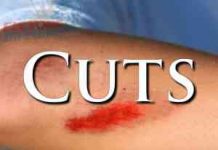Learn What Causes Bruising And How To Treat It
We’re no strangers to a bruise. With what we put our bodies through during a typical riding day, bruises are very common. We don’t necessarily enjoy them, but we deal with them.
 Everyday bruises are rarely (if ever) regarded as being dangerous. And nine times out of ten they’re not. But there are other factors to take into consideration. The major one is how you got the bruise in the first place.
Everyday bruises are rarely (if ever) regarded as being dangerous. And nine times out of ten they’re not. But there are other factors to take into consideration. The major one is how you got the bruise in the first place.
For that reason, it’s never a bad idea to brush up on first aid for bruises. If there is no serious injury, you can at least help relieve the symptoms and heal your bruise faster.
What Is A Bruise?
Bruises (or contusions) will form when blood vessels rupture just underneath your skin’s surface. The rupture will cause blood to seep into the impacted area’s tissue. As a result, darkened spots (often dark bluish and blackish) become visible on the surface of the skin.
 What Causes Bruising?
What Causes Bruising?
Most bruises are formed from blunt trauma to the body. Falling, running into something, getting struck by something, and other forceful impacts are all common causes of bruises. They can also develop from certain medical conditions, certain medications, and the natural aging process.
Observable Symptoms
The symptoms of a bruise are universally similar but individually different. For example, one person may naturally “bruise like a peach” while another will hardly ever bruise, or bruise very lightly.
Common symptoms include:
- A dark bluish-blackish spot on the skin. This is caused by bleeding under the surface of the skin.
- A dull or sharp pain, depending on the severity and type of impact (sometimes there is no pain)
- Possible swelling from impact – again, this depends on the type and severity of the impact
How To Treat A Bruise Fast With Basic First Aid
There’s not much basic first aid that can or needs to be done about a bruise immediately after getting one. The pressing concern should always be the investigation and discovery of other, more alarming symptoms (see Step 5).
The bruise should heal naturally in due time. However, there are a few things you can do to help alleviate the pain (if present), reduce swelling (if present), and speed up the healing process a little bit.
- Apply ice or a cool rag to the affected area for approximately 10-20 minutes a few times a day for the first 1-2 days. The cool rag will help speed up the healing process.
- Elevate the affected area, if possible. For instance, if the bruise is on your arm, keep your arm elevated (raised above your heart) as much as possible.
- Take OTC pain medication, if needed. If you’re experiencing mild pain, feel free to take Tylenol, Advil, Ibuprofen, or Aleve as instructed.
- Try to avoid contact with the affected area as much as possible.
Seek medical attention as soon as possible if you encounter any of the following
- Extreme pain or swelling
- Regular bruising for no apparent reason
- Any bruising caused by an impact to the head or face
- Any indicators of broken bones
If you suspect someone you know has a bruise that looks worse than they think, get them to a doctor immediately, as there isn’t much you can do with basic first aid.
If you have any questions or anything to add, please leave them in the comments or on our FaceBook page!
Keep Reading – Best Treatment For Blisters





